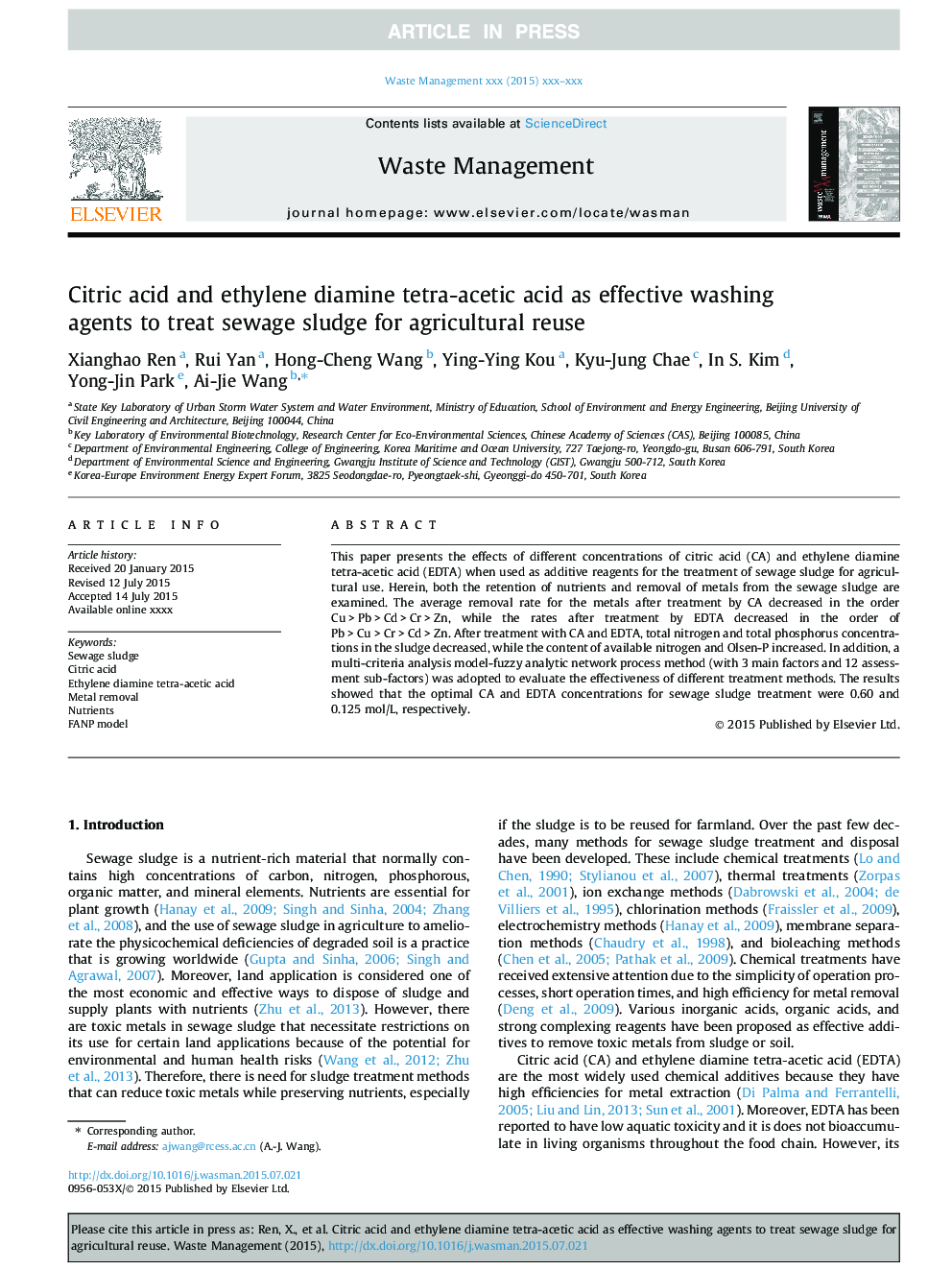| Article ID | Journal | Published Year | Pages | File Type |
|---|---|---|---|---|
| 6354517 | Waste Management | 2015 | 9 Pages |
Abstract
This paper presents the effects of different concentrations of citric acid (CA) and ethylene diamine tetra-acetic acid (EDTA) when used as additive reagents for the treatment of sewage sludge for agricultural use. Herein, both the retention of nutrients and removal of metals from the sewage sludge are examined. The average removal rate for the metals after treatment by CA decreased in the order Cu > Pb > Cd > Cr > Zn, while the rates after treatment by EDTA decreased in the order of Pb > Cu > Cr > Cd > Zn. After treatment with CA and EDTA, total nitrogen and total phosphorus concentrations in the sludge decreased, while the content of available nitrogen and Olsen-P increased. In addition, a multi-criteria analysis model-fuzzy analytic network process method (with 3 main factors and 12 assessment sub-factors) was adopted to evaluate the effectiveness of different treatment methods. The results showed that the optimal CA and EDTA concentrations for sewage sludge treatment were 0.60 and 0.125 mol/L, respectively.
Related Topics
Physical Sciences and Engineering
Earth and Planetary Sciences
Geotechnical Engineering and Engineering Geology
Authors
Xianghao Ren, Rui Yan, Hong-Cheng Wang, Ying-Ying Kou, Kyu-Jung Chae, In S. Kim, Yong-Jin Park, Ai-Jie Wang,
